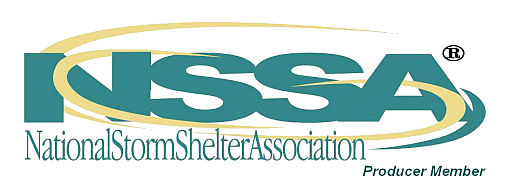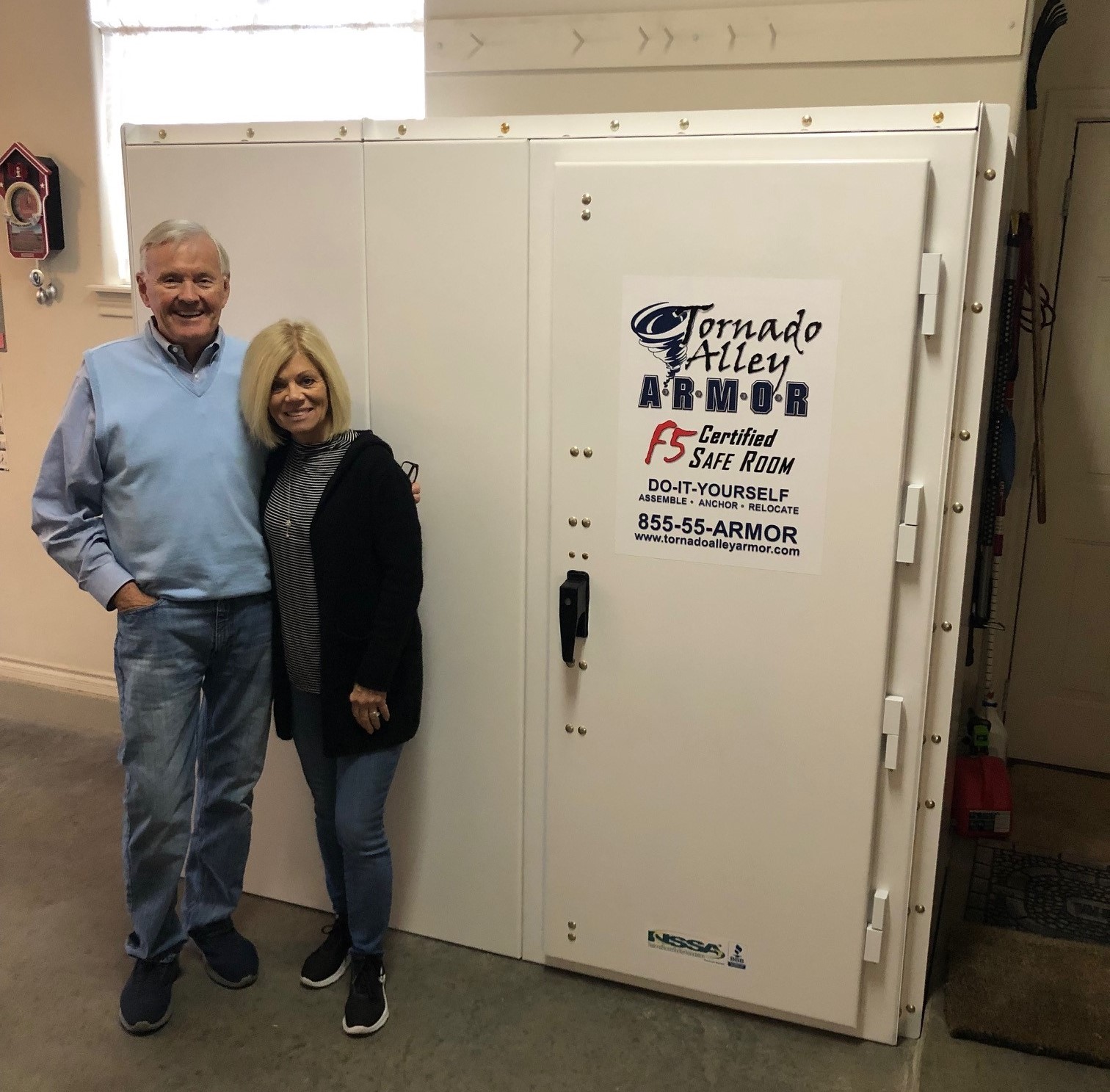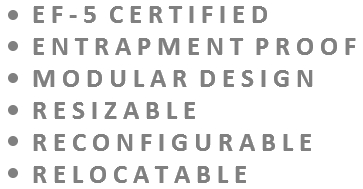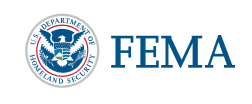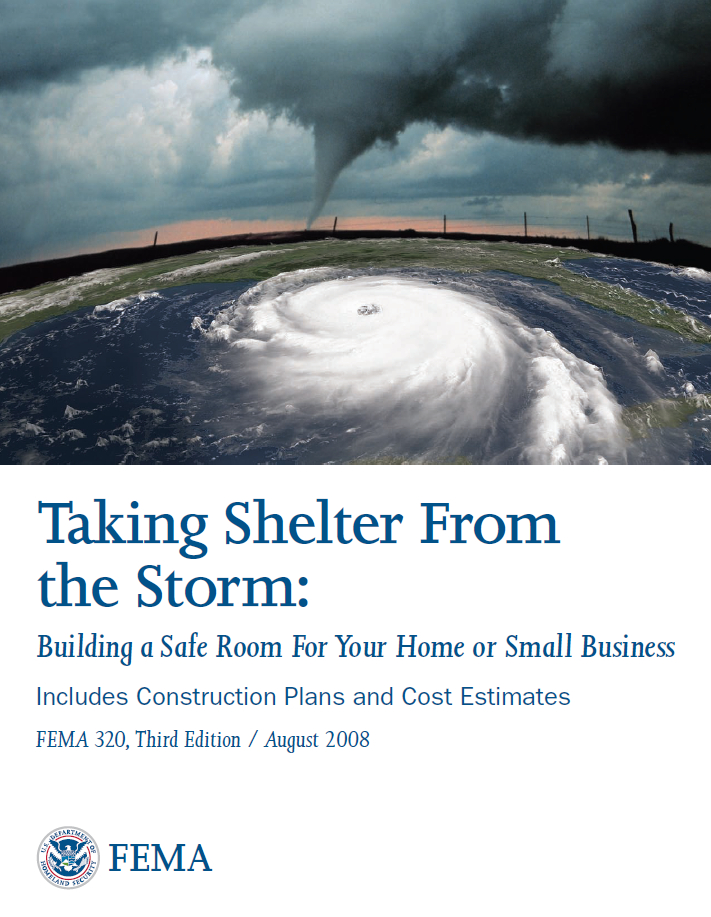Tornado Alley Armor Safe Rooms
EF5-CERTIFIED AND VERIFIED FEMA COMPLIANT
In this unregulated storm shelter industry, how do you know who to trust with your family’s safety? With no penalties for non-compliance and many having no safety verification process, manufacturers can get away with just about anything. That’s why we put so much care into working with trusted advisors to make sure you are safe.
ENGINEERING STANDARDS WERE NEEDED
FEMA guidelines were established to promote adequately engineered safe room and storm shelter designs at a time when anyone who could build a metal box for profit would do so. FEMA storm shelter inspectors were appalled at the insufficient designs and poor quality of many of the so-called “tornado shelters” that FEMA was funding. To address this, the National Storm Shelter Association (NSSA) was founded at the Texas Tech University Wind Science and Research Center by the late Dr. Ernst Keisling, PE., PhD. Ernie and his staff worked hand in hand with FEMA to develop the safe room guidelines that are now in place. With professional engineering standards established, FEMA could designate that only shelters built to their guidelines would be eligible for rebate funding.
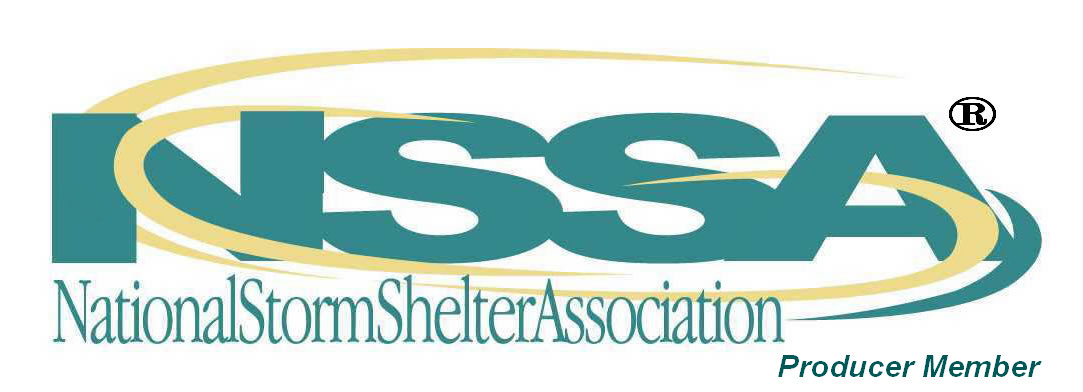
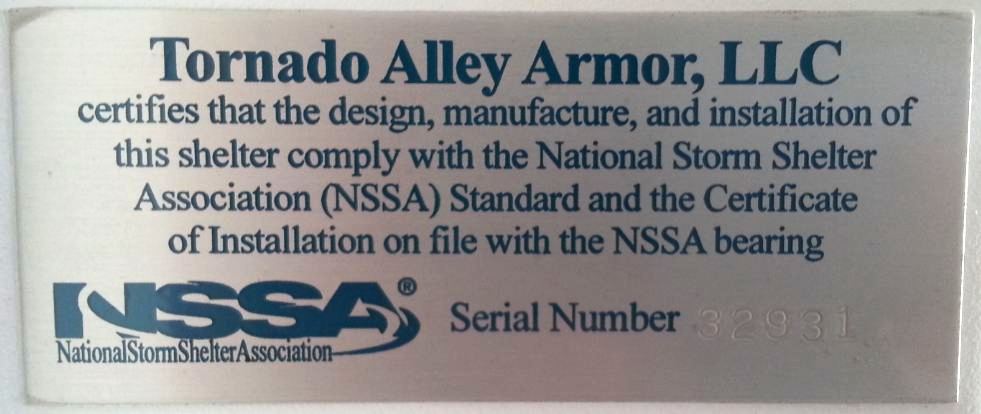
If it’s not NSSA sealed and verified, it’s “certification” is only as good as the seller’s word
What does that mean to you and your family’s severe weather safety if your safe room doesn’t have the NSSA Seal?
While FEMA and other organizations offer recommendations for safe room designs and installation, manufacturers are not required by law to adhere to them.
Depending on the knowledge, integrity, quality control and engineering expertise of your storm shelter manufacturer, you may or may not be adequately protected from the wind and debris from a tornado. This means anyone can start their own safe room company and operate with no regulatory requirements, oversight or fear of non-compliance penalties.
Some shelter manufacturers take advantage of the public’s misconception of TTU’s role in FEMA compliance, using “Texas Tech Impact Tested” and “FEMA320 Compliant” claims interchangeably…which they are not! Who is verifying their wind load, lift resistance calculations, anchoring systems, ventilation systems, quality control measures, installation procedures, hinge, latch and door design, documentation, etc… you?
NSSA Membership is recommended, endorsed and encouraged by meteorologists and weather professionals everywhere because it is the trusted and established authority on severe weather safety. Only about 30 members nationwide have met all the requirements to attain membership in the NSSA, and Tornado Alley Armor is among them!
The NSSA has set rigorous guidelines for quality control, production, manufacture, installation and erection of high quality storm shelters meeting the Association’s Storm Shelter Performance Standards, the requirements of other federal, state, and local standards and regulations, and the requirements of other governing material standards and codes. Qualification for available FEMA funding is virtually assured if your safe room carries the NSSA seal.


F5 Missle Impact Testing at Texas Tech University
Watch our NINE impact tests below and judge our level of safety for yourself.
IMPACT TESTING RESULTS
Did you notice that our safe room was subjected to nine impact tests, when most manufacturers stop at four? We asked for the additional impacts (225% of the required amount) to demonstrate how reliable our modular design is.
Did you notice that only one of the boards even split in half? They just bounce off, and that’s by design. Our tempered steel design functions similar to the “crumple zone” built into automobile designs, deflecting on impact and increasing the impact time by a few milliseconds. This additional time allows the energy to properly dissipate into the entire structure rather than remaining concentrated on the point of impact. It’s similar to the principle used in Kevlar bullet proof vests to prevent penetration…slow the projectile. And because our design is made to bend a little on impact, we provide a LIFETIME GUARANTEE to replace any part of your safe room that sustains structural deflection during a tornado.
If you watch impact tests from other manufacturers you’ll see the boards splinter, shatter or disintegrate at the point of impact. It makes for good video, but it’s not the ideal situation. That’s because the vast majority of the energy remains focused at the point of impact, increasing the potential for failure there. So if the debris happens to be a sharp metal object that doesn’t shatter instead of a blunt 2×4 that does, the thicker but more brittle non-tempered steel has a greater potential for failure than our tempered steel, which has been made stronger and more pliable through the tempering process.
Flying debris is the leading cause of injuries and fatalities during a tornado. But in this unregulated industry EF5 Missile Impact testing is only recommended, not mandatory.
Of the manufacturers that submit their tornado shelters or safe rooms for impact testing, most stop at the minimum requirement of only FOUR impacts to reach “EF5 Certified”, “FEMA Approved” (the latter being a totally false claim…FEMA does not directly endorse any shelter design or manufacturer). Be wary of sellers claiming to have “FEMA Approved” shelters.
Remember, impact testing alone IS NOT ENOUGH to ensure your safety.



